- Home
- Haruki Murakami
Absolutely on Music: Conversations With Seiji Ozawa Page 7
Absolutely on Music: Conversations With Seiji Ozawa Read online
Page 7
MURAKAMI: Speaking of wind instruments, I thought the horn player was awfully good in the Carnegie recording.
OZAWA: Yes, he’s great. His name is Radek Baborák. He’s a real genius, probably the best horn player in the world. He’s Czech. I first met him when he was still in Munich. After that he moved to the Berlin Philharmonic as first horn, and he often comes to play with the Saito Kinen. I think he first came to Japan the year of the Nagano Olympics—what’s that, 1998? We did the Beethoven Ninth for the Winter Olympics with him as fourth horn. The fourth horn is the one with the most solos. That was his first time, and he’s been coming ever since.
MURAKAMI: That horn solo really stuck with me.
OZAWA: Yes, it’s wonderful. He comes to Japan to play with both the Saito Kinen and the Mito Chamber Orchestra. I get along tremendously well with him. I’ve heard he’s quit the Berlin and gone back to the Czech Republic, though.
MURAKAMI: This CD of the Carnegie concert is a live recording, of course, but they’ve scrubbed it to remove stray noises, haven’t they? I was amazed the first time I heard it, it was so quiet. I could hardly believe it was live.
OZAWA: You’re right, it’s almost impossible to get such a clean live recording. They’ve taken out the audience’s coughs and wheezes and filled the gaps with rehearsal takes.
MURAKAMI: This feels like backstage gossip, but what they basically did was patch the blemishes?
OZAWA: That is correct.
MURAKAMI: But you told me that in the introductory part of the fourth movement there are also two unusual spots where they made a switch, for performance reasons, and it was not just to remove background noise. I should explain to our readers that you let me have a copy of the original recording and gave me a kind of homework assignment, asking me to find where it was different from the edited version. So I spent all of yesterday evening comparing the two recordings in every detail. [Laughter.]
I put the unedited CD of the symphony on, beginning with the fourth movement. While it plays, Ozawa eats a dried persimmon for nourishment. The orchestra reaches a long, diminishing roll of the timpani (2:28).
MURAKAMI: It starts here, right?
OZAWA: Yes, this is it.
The French horn begins to play the theme of the introductory section. The sound of the horn is deep and soft.
OZAWA: This is Baborák.
MURAKAMI: A beautiful, leisurely sound. How many horn players are there altogether?
OZAWA: There are four horns, but only two are playing here. They’re not playing in unison, though, but in alternating measures, and they overlap slightly where one ends and the other begins [2:39–43]. That way, there’s no break where they take a breath. Brahms indicated in his score that it should be done that way.
The horn solo ends, and the flute picks up the theme.
OZAWA: Now the flute takes it. This is Jacques Zoon. He was principal flautist in Boston about ten years ago. Now he’s teaching in Switzerland. The flutes alternate—the first flute [3:13], and now the second flute takes over [3:17]. Now here’s the first flute again [3:21]. Brahms specifies these small details so the audience won’t hear the instrumentalists taking a breath.
MURAKAMI: Here the flute solo ends, and now the theme is taken up by a wind ensemble [3:50].
OZAWA: Yes, three trombones, two bassoons, and there’s a contrabassoon in the mix, too.
The trombones here are playing for the first time in the movement, as if they have been waiting for their chance. Then, as if rising through a break in the clouds, the horns find their way through the quietly celebratory, majestic wind ensemble for another short solo (4:13).
MURAKAMI: This is where the part that’s different in the two versions ends, correct?
OZAWA: We’re listening to the first version now, right?
MURAKAMI: That’s right. In the first version, the horns seem to come strongly to the foreground, bright and clear.
OZAWA: Yes, while in the revised CD, the horns sound—
MURAKAMI: Farther back.
OZAWA: You’ve got it.
MURAKAMI: Well, I worked hard at comparing the two. [Laughter.] The horns are pulled back in the edited version, and the sound is duller and more restrained.
OZAWA: Right. The horns in the original are just a little too bold, so they replaced this part with another take, and that’s what you hear in the new version. Actually, though, there’s one more part where they switched takes.
MURAKAMI: That one I couldn’t find.
After a breathtakingly beautiful moment of silence, the strings ease into the fourth movement’s famous main theme (4:52). The introductory section, centered on the horn solos, has performed its important role—they lead right into this famous section.
MURAKAMI: All right, let’s now listen to the revised version, starting from the roll of the timpani.
The first horn solo begins.
OZAWA: Here is the first horn, then the second, then first, then second. See what I mean? You can’t hear the horn pausing for breath.
MURAKAMI: Not at all.
OZAWA: Now the flutes. First flute, one measure, second flute, then first, then second. Right at this point, in the other recording, you could hear him taking a breath. The flute actually requires more breath than the horn, you know. So they switched takes on this part.
MURAKAMI: Oh, really? I see what you mean. A layman would never notice something like that.
After the wind ensemble, the horn solo rises up again.
OZAWA: Here, see what I was talking about? The horns are softer in this recording.
MURAKAMI: They are softer. They sound very different. They were almost brash on the other recording, but here they have a more restrained, deeper quality.
Brahms uses the horns with great skill, as if calling the audience deep into a German forest. The sound carries with it an important part of Brahms’s internal spiritual world. Behind the horns, the timpani pulsate softly but insistently, as if secretly waiting for something with great meaning. This is a part well worth the great care that has been lavished on its editing.
OZAWA: The other instruments gradually join with the soloists.
MURAKAMI: You can hear the strings clearly.
OZAWA: Yes.
The introductory section ends, and the beautiful main theme begins, a melody that almost makes you want to add words.
MURAKAMI: I get the feeling that the switch in the horn segment somehow improved the balance, or the coherence of the music, over the unedited version. But this is something you can only get by concentrating very closely on every detail. The first version is also a wonderful performance. I’m sure I wouldn’t have noticed the difference if you hadn’t made me listen for it. In literary terms, this would be about equivalent to the difference in nuance introduced by one tiny modifier, which the overwhelming majority of readers would read through without noticing a thing. Still, the editorial skill here is amazing. There’s nothing odd going on in the sound.
OZAWA: No, this is the work of Dominic Fyfe, the English recording engineer. He’s terrific. In any case, 99 percent of the performance is straight from the live recording. As I said before, most of the edits were simply to remove audience noise.
Performing Brahms with the Saito Kinen Orchestra
MURAKAMI: Listening to this CD has made me wonder if the sound at Carnegie Hall has changed over the years.
OZAWA: It has. When we recorded this, I hadn’t been there for some time, and I’m pretty sure it changed during that time. It got a lot better.
MURAKAMI: I heard it was renovated.
OZAWA: Oh, really? That makes sense. When I brought the Boston Symphony there thirty years ago, you could hear the subway rumbling underground. It passes right underneath. You’d get the subway going by four or five times in the space of one symphony. [Laughter.]
MURAKAMI: At least from listening to this recording, it seems to me that the sound is better.
OZAWA: You’re right, it’s much better than it used to
be. The live recording came out a lot better than I thought it would. Hmm…when was I last at Carnegie before this? Probably five years ago when I conducted the Vienna Philharmonic there. I remember then thinking that the sound had improved. It certainly hadn’t when I was there with the Boston Symphony.
MURAKAMI: As I mentioned earlier, I heard you do the Brahms First with the Boston Symphony in 1986; and later with the Saito Kinen Orchestra on DVD. Now there’s this new performance at Carnegie Hall, and listening to them all, I get the impression the sound is very different from one recording to the next. Why do you think they’re so different?
OZAWA [after a lot of thought]: Well, first of all, the biggest difference might be that the Saito Kinen string sound has changed. How should I put it? The strings are more “talkative”? They’ve brought expression more to the foreground. The strings have made their expression so rich that some people might say they’re overdoing it.
MURAKAMI: You mean their expressiveness is more overt?
OZAWA: Yes, and the wind instruments have joined them in being more expressive. For comparison, we listened to the same part of the Brahms First played by Karajan and the Berlin Philharmonic a few minutes ago, and of course it was very fine and well balanced and solidly symmetrical, but the Saito Kinen musicians are not that concerned about balance. Just listen to this Carnegie Hall performance we’re discussing, and you can tell their mind-set is probably very different from that of the usual professional orchestra.
MURAKAMI: Their mind-set?
OZAWA: In other words, say you’ve got a dozen or more people in a section of the orchestra. Each one of them, from the one in front to the one all the way in back, is thinking, “I’m the one who’s going to make this work,” “I’m number one,” and they’re playing up a storm.
MURAKAMI: That’s incredible. But even if there has been this change in expressiveness, the actual sound of the strings hasn’t changed direction all that much since the beginning.
OZAWA: Not at all. It’s exactly the same.
MURAKAMI: I’d like to hear a little about the origins of the Saito Kinen Orchestra. It’s not a typical permanent orchestra, is it? People who normally work in other places get together once a year and perform as a unit.
OZAWA: That’s right.
MURAKAMI: In other words, they take off from work to join forces?
OZAWA: Well, there’s the string section, for example. I won’t say most of its members, but a good number of them, do not perform in other orchestras. True, we have people such as the concertmaster of a famous orchestra, but I’m pretty sure the greater proportion of our members are people who do not belong to specific orchestras, people who play chamber music or who teach.
MURAKAMI: I guess there are a lot of musicians like that.
OZAWA: I think there are more and more people, especially lately, who want to make music but who don’t want to play in an orchestra all year.
MURAKAMI: You mean, they want to make music more freely—they don’t want to submit to the restrictions involved in belonging to a fixed organization.
OZAWA: Right. For example, there’s Claudio Abbado’s Mahler Chamber Orchestra. It’s the same thing with them. A lot of leading musicians gather together from all over to form the group, but most of them are active in music without belonging to specific orchestras.
MURAKAMI: That is an outstanding orchestra, isn’t it?
OZAWA: Yes, they’re terrific.
MURAKAMI: Lately, it seems, new organizations like that, very high-quality orchestras separate from the established, so-called distinguished orchestras, have been on the increase throughout the world. Since the members of these new groups gather spontaneously, do you think that naturally leads to a certain kind of spontaneity in the sounds they produce?
OZAWA: That could very well be the case, because these are not people who belong to an orchestra and play with the same people week after week. And even if some of them are musicians who play with the same people week after week, they see all new faces in these new groupings, and so they come to the music with a different mind-set. Of course, there are people who call these new orchestras “once-a-year wonders,” and not always with a good meaning. [Laughter.]
MURAKAMI: Which means the musicians are not your employees, so if they happen not to like the music you are making, they can decide not to participate next time. It’s not a job for them that requires them to do work they don’t like. They can just up and quit.
OZAWA: Well, true, but we do have people who come all that distance for the chance to work with me. Musicians who normally play in Berlin or Vienna or in some American orchestra will make the trip to the hills of Matsumoto. It’s hard for people like that to take time off, and while they’re in Matsumoto, they can’t do side jobs or take students.
MURAKAMI: Are you saying you can’t pay them very well?
OZAWA: We’re always struggling to pay them as much as possible, but quite frankly, we have our limits.
MURAKAMI: But still, the number of orchestras worldwide that are organized in such a fluid way, with people freely coming and going, has been increasing, hasn’t it? It’s quite a contrast to traditional established orchestras operating under a strict management system. And that way the musicians can enjoy spontaneously “talking” with each other.
OZAWA: Yes, Claudio Abbado’s Lucerne Festival Orchestra is like that, and so is the Deutsche Kammerphilharmonie.
MURAKAMI: Oh, that’s the Bremen orchestra that Paavo Järvi directs, isn’t it? I heard it the other day.
OZAWA: Each one of them is active for three or four months out of the year, and after that the musicians have to fend for themselves—“Sorry, everybody, we can’t pay your salary while you’re away, so you’re on your own now.” That’s the new system.
MURAKAMI: It’s different for the conductors, too, I suppose. Your attitude must be a little different when you’re conducting one of these orchestras as opposed to conducting an established orchestra—say, when you were conductor of the Boston Symphony.
OZAWA: Oh, yes, very different, of course. You’re a little tense, for one thing, and you bring a different kind of enthusiasm to it. Everybody—a group of friends—gets together in the hall for the “once-a-year wonder,” so you’d better stay alert or you hear them saying, “You’re not your usual self this year, Seiji. Maybe your strength is waning,” or “Maybe you haven’t been doing your homework.” It can be tough. I’ve had a lot of occasions where they could be pretty nasty—or at least blunt. [Laughter.] Well, anyway, most of my buddies from the old days have retired or whatnot. There aren’t too many of them left.
MURAKAMI: How do you decide what to play?
OZAWA: At first it was nothing but Brahms. We’d add maybe Bartók’s Concerto for Orchestra or Toru Takemitsu’s November Steps, but the core of the repertory was always the four Brahms symphonies. Sticking close to Brahms, we’d add other pieces little by little. We did one of the four Brahms symphonies each year, and then the Matsumoto music festival began. In Matsumoto, too, we did Brahms and went on to Beethoven.
MURAKAMI: First, let there be Brahms.
OZAWA: Exactly.
MURAKAMI: But why? Why Brahms?
OZAWA: Well, we—or rather I—felt that Brahms best conveyed the sense of Professor Saito. You’ve heard of the conductor Kazuyoshi Akiyama, I’m sure. He saw things differently. He thought we should be doing a little lighter repertory—Mozart and Schumann. I’m pretty sure he first conducted Schumann with the Saito Kinen. But I thought we should do Brahms. I asked the others about it, and I think that’s how we decided. We felt that Brahms was more suited than Beethoven to Professor Saito’s idea of “talkative strings,” a richer expressiveness in the string section. So then we started touringEurope with the idea of doing the complete Brahms. We’ve done four European tours now. The first Brahms symphony we played was…I’m pretty sure…the First.
MURAKAMI: Professor Saito’s main repertory consisted of Brahms, Beethoven, and Mozart, I be
lieve.
OZAWA: Yes, and Haydn.
MURAKAMI: Mainly German music.
OZAWA: Yes, and Tchaikovsky, of course. The symphonies and the Serenade for Strings. We had our longest and best training for the Serenade at the Toho Gakuen School of Music. And do you know why? Because the Toho orchestra hardly had any wind instruments! [Laughter.] We’d play Mozart with only one oboe and one flute, and the organ would fill in for the rest. Sometimes I played the timpani, and then Professor Saito would conduct; or if it was a piece without timpani, I would conduct. Yes, there really was a time like that!
MURAKAMI: When you say the orchestra was suited to Brahms, how do you mean? Was it the timbre, or the sound?
OZAWA: No, it’s not so much the sound as…how should I put this? Its style of playing, the string section’s use of the bow, their direction, their phrasing are probably just suited to Brahms. Professor Saito taught us that music is expression, and that is also my view. When he taught us a Brahms symphony, he was especially fervent about this. He had to be practical, though, and so, in part because of the available instrumentation, he tended to teach pieces such as Tchaikovsky’s Serenade for Strings, Mozart’s Divertimento, some of Handel’s Concerti Grossi, a Bach Brandenburg concerto, or Schoenberg’s Verklärte Nacht.
MURAKAMI: But even with that dearth of wind instruments, he’d forge ahead energetically with a Brahms symphony?
OZAWA: That’s right. He’d manage, one way or another, to make up for the thin ranks of wind players.
MURAKAMI: I’m not very knowledgeable about technical matters, but aren’t Brahms’s orchestrations a good deal more complex than Beethoven’s?
OZAWA: No, not really. They were working with practically the same instruments. Something like the contrabassoon was not so common in Beethoven’s day, but otherwise they were not that different. There are only the tiniest differences in orchestration.

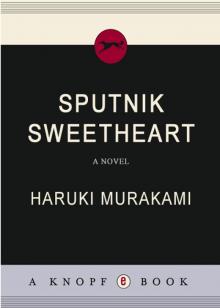 Sputnik Sweetheart
Sputnik Sweetheart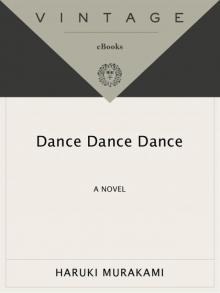 Dance Dance Dance
Dance Dance Dance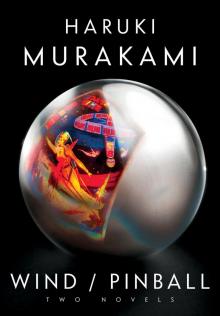 The Wind (1) and Up Bird Chronicle (2)
The Wind (1) and Up Bird Chronicle (2) Blind Willow, Sleeping Woman
Blind Willow, Sleeping Woman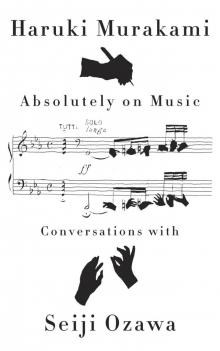 Absolutely on Music: Conversations With Seiji Ozawa
Absolutely on Music: Conversations With Seiji Ozawa Norwegian Wood
Norwegian Wood South of the Border, West of the Sun
South of the Border, West of the Sun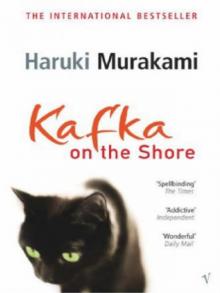 Kafka on the Shore
Kafka on the Shore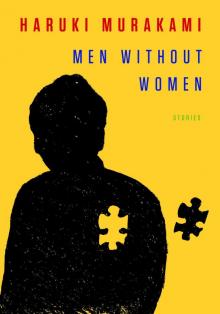 Men Without Women
Men Without Women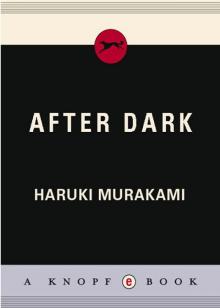 After Dark
After Dark Hard-Boiled Wonderland and the End of the World
Hard-Boiled Wonderland and the End of the World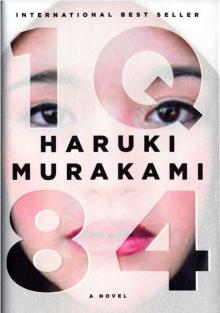 1q84
1q84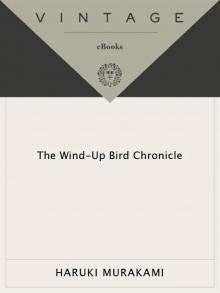 The Wind-Up Bird Chronicle
The Wind-Up Bird Chronicle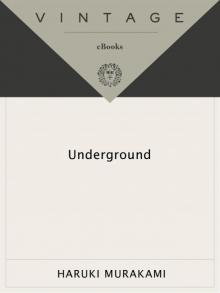 Underground: The Tokyo Gas Attack and the Japanese Psyche
Underground: The Tokyo Gas Attack and the Japanese Psyche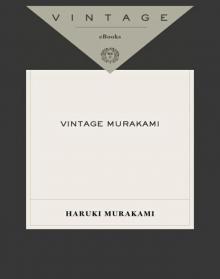 Vintage Murakami
Vintage Murakami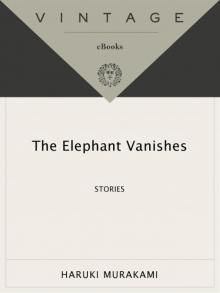 The Elephant Vanishes: Stories
The Elephant Vanishes: Stories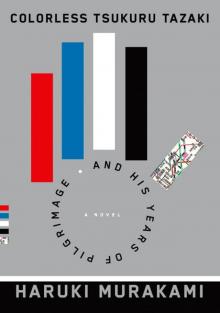 Colorless Tsukuru Tazaki and His Years of Pilgrimage
Colorless Tsukuru Tazaki and His Years of Pilgrimage First Person Singular
First Person Singular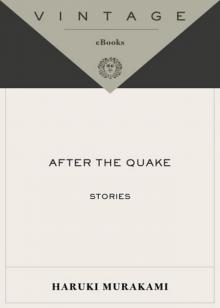 After the Quake
After the Quake A Wild Sheep Chase
A Wild Sheep Chase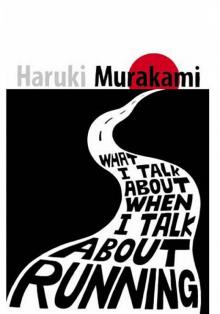 What I Talk About When I Talk About Running
What I Talk About When I Talk About Running Birthday Girl
Birthday Girl The Elephant Vanishes
The Elephant Vanishes Norwegian Wood (Vintage International)
Norwegian Wood (Vintage International)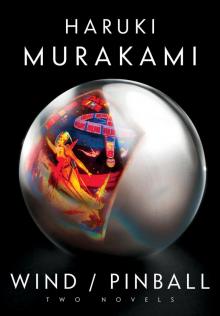 Wind/Pinball
Wind/Pinball Norwegian Wood Vol 1.
Norwegian Wood Vol 1.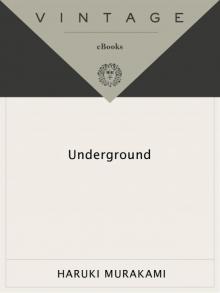 Underground
Underground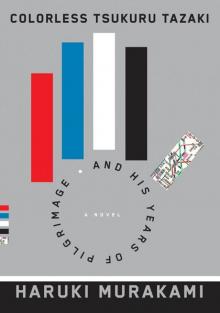 Colorless Tsukuru Tazaki and His Years of Pilgrimage: A novel
Colorless Tsukuru Tazaki and His Years of Pilgrimage: A novel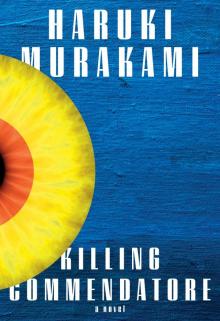 Killing Commendatore
Killing Commendatore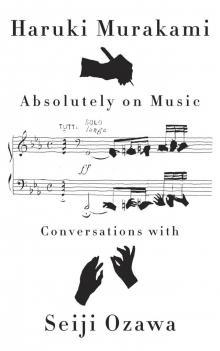 Absolutely on Music
Absolutely on Music